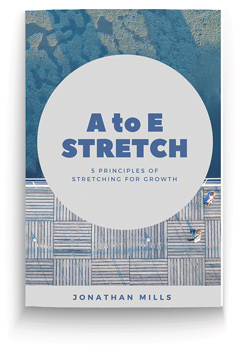News display stands and bookshops are full of magazines with covers that seemingly represent beauty – men and women who have it all in terms of looks and physical attributes “to die for”. Rippling muscles, perfect proportions, expensive make-up, designer clothes, exotic jewellery and matching accessories, all necessary “items” to make the cover of a glossy magazine and promote sales, stare you in the face. For those of us who feel quite intimidated by this overt display of perfection, news agencies should supply mandatory “blinkers” to assist with keeping our self-images intact. Put the blinkers on and you can walk past unscathed and do the rest of your shopping! If only there were optional and/or other entrances to these stores, then one could slip in, but they always place this “beauty” right at the door. It’s hard to avoid being confronted by super models, television personalities and sports stars. They are in your face the moment you enter the supermarket and they stare at you as if you are a second-rate citizen, not having quite made the grade in the beauty stakes.
Perhaps the word “beauty” is used too flippantly today or perhaps it has taken on other nuances of meaning over time, but the original word not only meant the quality of being pleasing, especially to look at, but also the interpretation of some entity as being in balance and harmony with nature. Some of those glossy beauties are far from being in harmony with anyone, let alone nature! In ancient Egypt, a beautiful face and a female body shape was honoured, but it was Nefertiti that refined the concept of beauty for her people – her name itself means “coming beauty” – suggesting partly the ever-blossoming journey from girlhood to womanhood, but also a beauty emanating from within. In the ancient Greek world, the Pythagorean School saw a relationship between mathematics and beauty, Plato considered beauty to be the Idea (form) above all other ideas and Aristotle saw a link between the beautiful and virtue arguing that virtue aims at the beautiful. Seemingly, beauty was not only considered to be skin-deep!
In our respective societies today, beauty presents a standard of comparison – it can cause dissatisfaction and resentment when not achieved. In many studies, findings suggest that salaries, lighter or heavier sentences in court and examination grades can all be influenced by the relative attractiveness of a person. Apparently, to be ordinary-looking is not good or not good enough, thus engendering a never-ending cycle of quests to become more attractive, at least to the human eye. The media’s “beauty bombardment” inevitably starts eating away at one’s self-esteem – I feel quite ordinary when standing in front of the magazine rack – and one’s true value and beauty is side-lined. For the sake of retaining our dignity and keeping our self-images reasonably healthy, perhaps we should be recognising and acknowledging all the facets of the word “beauty” and not just seeing the word in a singular, media-defined sense.
Someone once said: “Real beauty is wild and unpredictable, hidden in your weakness, your tenderness and your humility” (Anon). The intended meaning here was not necessarily an attack on external beauty, but rather a discovery and understanding of features of inner beauty, virtue and character. It is a celebration of the good within, that which is selfless, compassionate and kind. It is recognition of intrinsic worth and the resident value of the human being. It acknowledges personality, preferences, giftedness and pain. It stands in awe of personal sacrifice on behalf of another and applauds sensitivity and empathy. It is foundational to being truly and authentically human in the very best sense.
St Augustine said of beauty: “Beauty is indeed a good gift of God; but that the good may not think it a great good, God dispenses it even to the wicked”. Perhaps true beauty lies within – discover it and use it appropriately.










